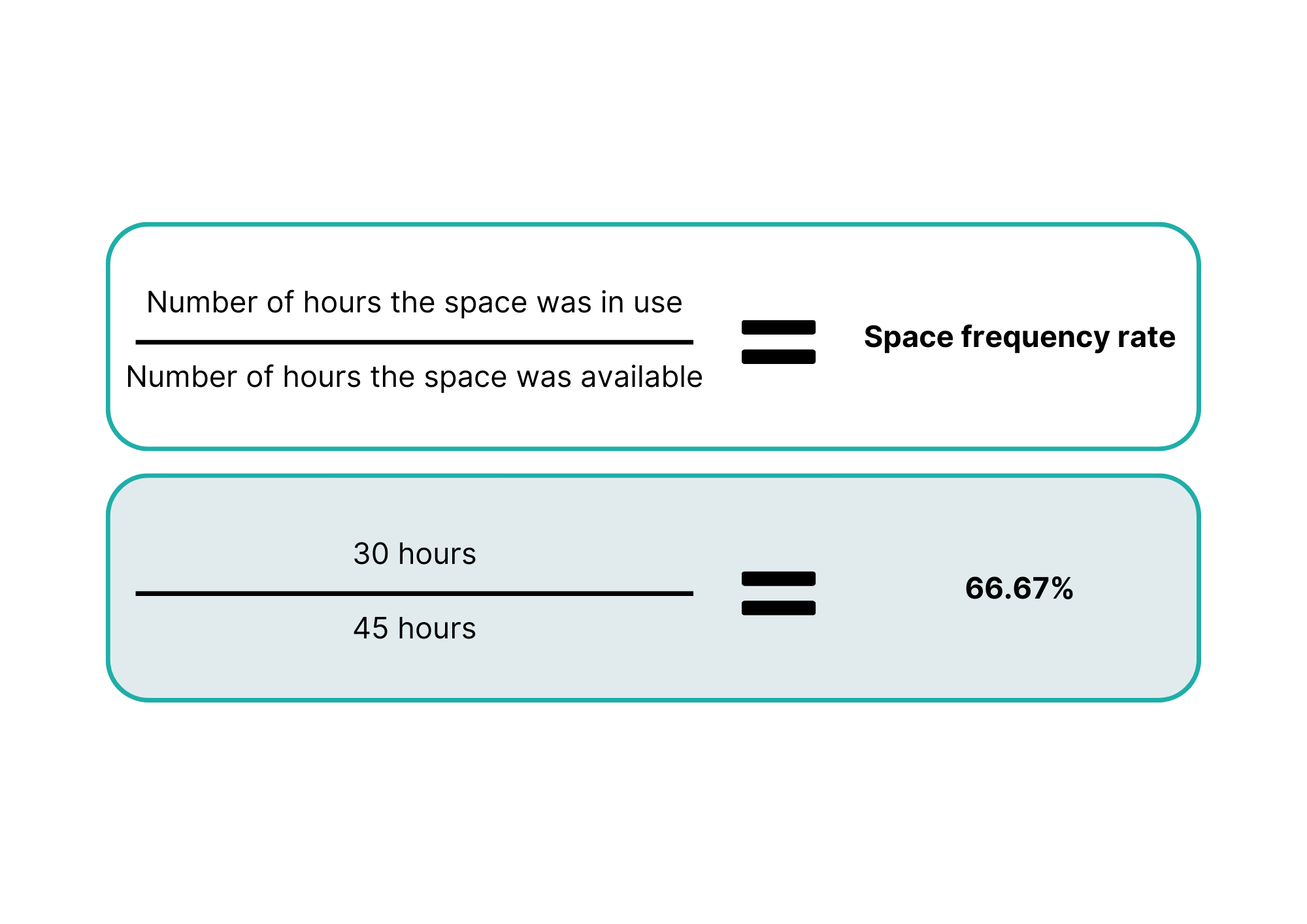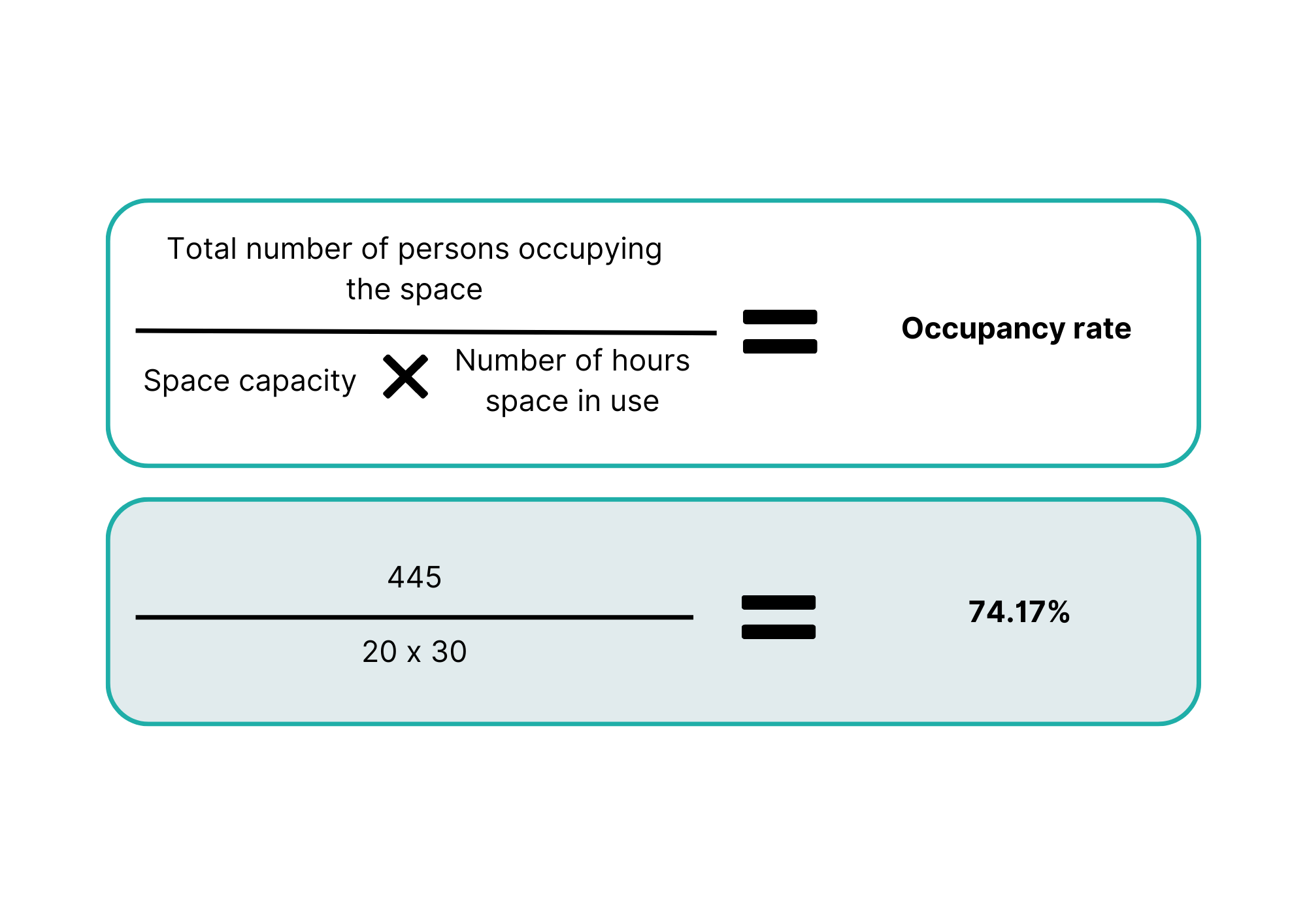Apr 4
A Guide to Calculating Space Use for Timetablers
How do you know if classrooms and other teaching spaces at your university are being used well?
Empty space, drag to resize
A few relatively simple sums can give you clear answers, and in turn help you make the best timetabling decisions!
Here we’re going to show you how to calculate a room’s frequency, occupancy and utilisation rate. All three can help you spot general patterns of room use without having to wait for bigger space utilisation surveys to be carried out.
Say, for example, you want to gain a clearer picture of space use in a specific building over a certain period of time. You can apply the formulae we’re about to take you through to pretty much any situation.
Once you’ve got a grasp of these you’ll find them really useful – after all the more understanding you can glean about how a space is used, the better your timetables and in turn, the better the experience for staff and students all-round.
So grab your calculator, and let’s take a walk through calculating frequency, occupancy and utilisation, step-by-step.
Here we’re going to show you how to calculate all three for one room over the course of a week.
Just a side note before we start too - whenever you carry out this exercise, make sure you collect all your data on a room or space over the same time period, to get an accurate utilisation rate figure at the end.
Here we’re going to show you how to calculate a room’s frequency, occupancy and utilisation rate. All three can help you spot general patterns of room use without having to wait for bigger space utilisation surveys to be carried out.
Say, for example, you want to gain a clearer picture of space use in a specific building over a certain period of time. You can apply the formulae we’re about to take you through to pretty much any situation.
Once you’ve got a grasp of these you’ll find them really useful – after all the more understanding you can glean about how a space is used, the better your timetables and in turn, the better the experience for staff and students all-round.
So grab your calculator, and let’s take a walk through calculating frequency, occupancy and utilisation, step-by-step.
Here we’re going to show you how to calculate all three for one room over the course of a week.
Just a side note before we start too - whenever you carry out this exercise, make sure you collect all your data on a room or space over the same time period, to get an accurate utilisation rate figure at the end.
Frequency
Let’s assume your room is available from Monday to Friday, between 9am and 6pm.
To calculate your room’s frequency rate, simply divide the number of hours it’s available (in this case 45) by the number of hours it’s actually used. Let’s say your room is in actual use for 30 hours of the week. You therefore calculate your frequency rate like this:
To calculate your room’s frequency rate, simply divide the number of hours it’s available (in this case 45) by the number of hours it’s actually used. Let’s say your room is in actual use for 30 hours of the week. You therefore calculate your frequency rate like this:

You now know your room was used 66.67% of the time and was empty 33.33% of the time. Your frequency rate is 66.67%.
Occupancy
Now you need to figure out your occupancy rate. You’ll need three pieces of information to calculate this:
Your room’s capacity is simply the number of people who can comfortably use it at any one time, taking into account allocated desk space, furniture and the overall layout.
Let’s assume your room has 20 seats and 20 desks. Therefore, your capacity is 20.
To work out how many times your room was occupied over the course of the week, do a headcount every time the room is used. At the end of the week, you should end up with a total figure - i.e. the total number of times people were recorded as occupying the space. Let’s say this figure is 445.
Now for some more maths! You need to divide your occupancy figure (445) by your capacity (20) x the number of hours your room was actually used (which you know to be 30 hours, from when you worked out your frequency rate). Like this:
- Your room’s capacity
- The number of times your room was occupied over the course of the week
- The number of hours your room was in use
Your room’s capacity is simply the number of people who can comfortably use it at any one time, taking into account allocated desk space, furniture and the overall layout.
Let’s assume your room has 20 seats and 20 desks. Therefore, your capacity is 20.
To work out how many times your room was occupied over the course of the week, do a headcount every time the room is used. At the end of the week, you should end up with a total figure - i.e. the total number of times people were recorded as occupying the space. Let’s say this figure is 445.
Now for some more maths! You need to divide your occupancy figure (445) by your capacity (20) x the number of hours your room was actually used (which you know to be 30 hours, from when you worked out your frequency rate). Like this:

You now know that when your room was used it was 74.17% occupied, and that 26.83% of its capacity wasn’t being used. Your occupancy rate is 74.17%.
Utilisation
Now you can calculate your utilisation rate. And it’s super simple - all you do is multiply your frequency rate (66.67%) and occupancy rate (74.17%). Like so:

Your utilisation rate is 49.45%. In this example, it indicates your room could be put to use more often and perhaps more effectively, too.
We hope you found this walkthrough helpful. If you’d like to learn more about space utilisation, why not check out our Timetabling Basecamp course, which includes a useful introduction.
We hope you found this walkthrough helpful. If you’d like to learn more about space utilisation, why not check out our Timetabling Basecamp course, which includes a useful introduction.
Multiply your skills at Timetabling Basecamp
Our Timetabling Basecamp course is designed for timetablers just like you and is a great place to hone your skills, learn new ones, collaborate with peers and solve your timetabling issues in real-time, all under the guidance of our team of experts.
Tell me more about Timetabling Basecamp
Tell me more about Timetabling Basecamp
Receive timetabling tips, straight to your inbox!
Sign up for our regular newsletters and receive top-notch timetabling tips and insights. It’s another great way to help you take your timetabling skills to the next level. Simply sign up here, and we’ll do the rest.
© 2020-2024 Escentral — All rights reserved

